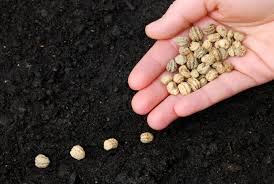Seeds went into the ground at the Cedar Ridge Farm in the past few weeks. Lettuce seed, so tiny it feels like chaff in the palm of your hand, beet seed all spiky and rough, and potato seed, which is really no seed at all, but chunks of the vegetable itself, dormant flesh with living eyes. This week there is a green fuzz on the top of the rows, as seeds germinate and push through the crust of earth and head for the sun.
Seeds aren’t alive, really. As they sit waiting for earth they don’t respirate, don’t reproduce, don’t grow. In all likelihood the plant that created the seed is dead and gone, it’s progeny nothing but a handful of dried potential. And yet, in that seed – even the tiny lettuce, or the speck that is a mustard seed – is a dormant embryo, the plant that is to be.
It should be no wonder that we celebrate Easter in the same month that the seeds begin their miraculous rebirth. From a winter when death was so very real, so very near, we arrive at spring, where life is equally insistent, where resurrection must be taken seriously. If Easter were in January, when we are surrounded by the cold and dark, would we find it possible to believe in a risen Christ? How could we, we skeptics and doubters, without the vibrant green evidence of a world that is yearly reborn?

